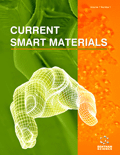Abstract
Background: Innovation mission in material science requires new approaches to form functional materials, wherein the concept of its formation begins in nano/micro scale. Rare earth oxides with general form (RE2O3; RE from La to Lu, including Sc and Y) exhibit particular proprieties, being used in a vast field of applications with high technological content since agriculture to astronomy. Despite their applicability, there is a lack of studies on the surface chemistry of rare earth oxides. Zeta potential determination provides key parameters to form smart materials by controlling interparticle forces, as well as their evolution during processing. This paper reports a study on zeta potential with emphasis on rare earth oxide nanoparticles. A brief overview of rare earths, as well as zeta potential, including sample preparation, measurement parameters, and the most common mistakes during this evaluation are reported.
Methods: A brief overview of rare earths, including zeta potential, and interparticle forces are presented. A practical study on zeta potential of rare earth oxides - RE2O3 (RE as Y, Dy, Tm, Eu, and Ce) in aqueous media is reported. Moreover, sample preparation, measurement parameters, and common mistakes during this evaluation are discussed.
Results: Potential zeta values depend on particle characteristics such as size, shape, density, and surface area. Besides, the preparation of samples, which involves electrolyte concentration and time for homogenization of suspensions, is extremely valuable to get suitable results.
Conclusion: Zeta potential evaluation provides key parameters to produce smart materials through which interparticle forces can be controlled. Even though zeta potential characterization is mature, investigations on rare earth oxides are very scarce. Therefore, this innovative paper is a valuable contribution to this field.
Keywords: ceramic suspension, colloidal stability, electrolyte, electrophoretic mobility, isoelectric point, lanthanides, nanoparticles, rare earths, zeta potential.
Graphical Abstract
 5
5



